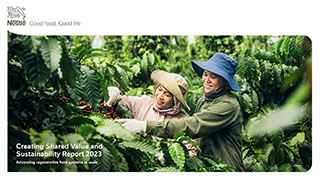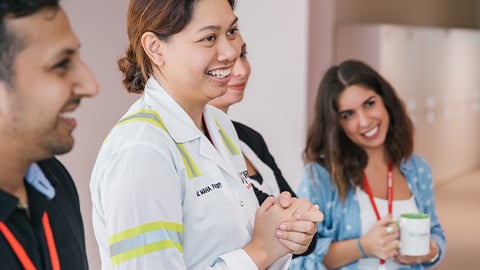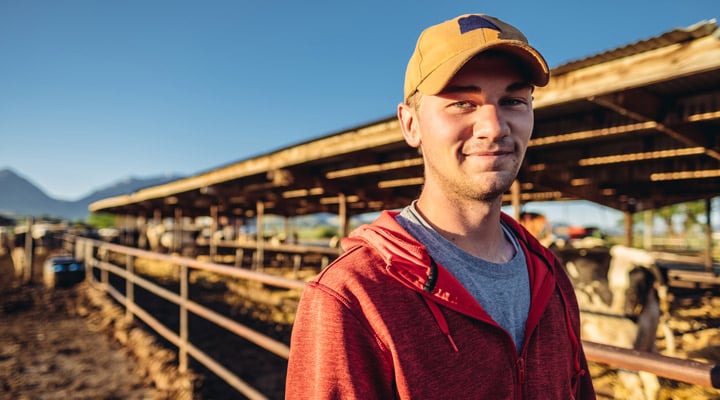Safety and health at work

People are at the heart of our business so taking care of our employees, business partners and the communities we operate in is extremely important.
Maintaining a healthy and motivated workforce
Setting high standards for health and safety
As a company that employs approximately 267 000 people worldwide and aims to inspire people to live healthier lives, we have a responsibility to provide a zero-harm work environment for our employees and on-site contractors, and to ensure that our sites and activities do not cause harm to the local communities where we operate. We believe that taking care of people helps to build and sustain a healthy and motivated workforce.
With many of our employees working in factories and production facilities where health and safety is critically important, we take a proactive approach to preventing accidents, eliminating risks and promoting safe behaviors. We have a ‘zero-harm’ vision and expect the most serious rules – to prevent serious injuries or fatalities – to be applied with zero tolerance. We empower employees to stop work and speak up if they encounter an unsafe scenario. Beyond our operations, we have created programs encouraging safe behaviors among children, such as crossing roads.
Our key actions
- Continue strengthening our safety culture toward zero harm, with people at the center of everything we do.
- Deliver against the milestones from the Nestlé Roadmap for Employee Health, to inspire and empower our people to choose a healthier life.
- Strengthen direct suppliers' capacity to uphold Nestlé's requirements on OHS as part of our Supplier Human Rights and Environmental Due Diligence (HREDD) Assurance Framework.
- Engage and support prioritized direct suppliers in taking actions to address OHS risks and impacts in their own operations and supply chains.
- Collaborate with peers and stakeholders to help address systemic issues and develop common approaches and tools for safety and health.
- Support access to remedy via safe and effective grievance mechanisms for our employees and workers affected by our operations, business relationships and agricultural supply chains.
Digital tools which prevent accidents
We have developed a digital, predictive risk model which we constantly update with different variables to anticipate threats in the workplace. By precisely mapping risks, we can apply mitigations to reduce accidents. We use a platform called Connected Safety to train employees based on the risk mapping, which also contains information on life-saving and first aid procedures.
Virtual reality technology helps to enhance learning programs – educating users on risks, as well as providing new data points to enrich our predictive risk modelling. Its immersive nature means that recall rates have increased to 75% from 10% scores in reading materials, according to the Nestlé Global Safety Team. VR will play an increasingly important role in future safety training development.

Enhancing mental well-being
To tackle mental health challenges – including stress and poor-quality sleep – we provide guidance and advice to employees through webinars, online content, participation in campaigns such as #HealthyLives and Mental Health Week and promoting taking active breaks. With homeworking now well-established, we have now formalized a hybrid, flexible working policy in all markets and introduced programs encouraging homeworkers to take breaks or practice mindfulness.
Safer working conditions at sea
In Thailand, where we source up to seven percent of our seafood, we have explored how to improve safety on fishing vessels. In a collaboration with the non-profit organization Verité and our seafood supplier Thai Union, we are using a demonstration vessel to show how mechanization to deploy and retrieve nets can improve worker safety and reduce overcrowding on board.
Creating a culture of safety
We audit all our facilities for compliance with our sustainability and human rights requirements across seven pillars, including Safety and Health, Environmental Sustainability, Conditions of Work and Employment, Local Communities and Labor Accommodation, as well as Business Integrity and Security.

As a health and wellness company, we don’t just think of the health of our consumers, but we are continually working hard to support the well-being of thousands of colleagues. Through our holistic employee wellness strategy, we aim to support our employees to lead healthier lifestyles, at work and throughout their everyday lives.


















